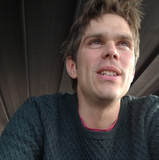BibTeX
@article{yunus24star,
TITLE = {Recent Trends in {3D} Reconstruction of General Non-Rigid Scenes},
AUTHOR = {Yunus, Raza and Lenssen, Jan Eric and Niemeyer, Michael and Liao, Yiyi and Rupprecht, Christian and Theobalt, Christian and Pons-Moll, Gerard and Huang, Jia-Bin and Golyanik, Vladislav and Ilg, Eddy},
LANGUAGE = {eng},
ISSN = {0167-7055},
PUBLISHER = {Blackwell-Wiley},
ADDRESS = {Oxford},
YEAR = {2024},
PUBLREMARK = {Accepted},
JOURNAL = {Computer Graphics Forum (Proc. EUROGRAPHICS)},
VOLUME = {43},
BOOKTITLE = {EUROGRAPHICS 2024 STAR -- State of The Art Reports},
}Endnote
%0 Journal Article %A Yunus, Raza %A Lenssen, Jan Eric %A Niemeyer, Michael %A Liao, Yiyi %A Rupprecht, Christian %A Theobalt, Christian %A Pons-Moll, Gerard %A Huang, Jia-Bin %A Golyanik, Vladislav %A Ilg, Eddy %+ External Organizations Computer Vision and Machine Learning, MPI for Informatics, Max Planck Society External Organizations External Organizations External Organizations Visual Computing and Artificial Intelligence, MPI for Informatics, Max Planck Society Computer Vision and Machine Learning, MPI for Informatics, Max Planck Society External Organizations Visual Computing and Artificial Intelligence, MPI for Informatics, Max Planck Society External Organizations %T Recent Trends in 3D Reconstruction of General Non-Rigid Scenes : %G eng %U http://hdl.handle.net/21.11116/0000-000E-B1CE-2 %D 2024 %J Computer Graphics Forum %O Computer Graphics Forum : journal of the European Association for Computer Graphics Comput. Graph. Forum %V 43 %I Blackwell-Wiley %C Oxford %@ false %B EUROGRAPHICS 2024 STAR – State of The Art Reports %O EUROGRAPHICS 2024 EG 2024 45th Annual Conference of the European Association for Computer Graphics ; Limassol, Cyprus, April 22-26

